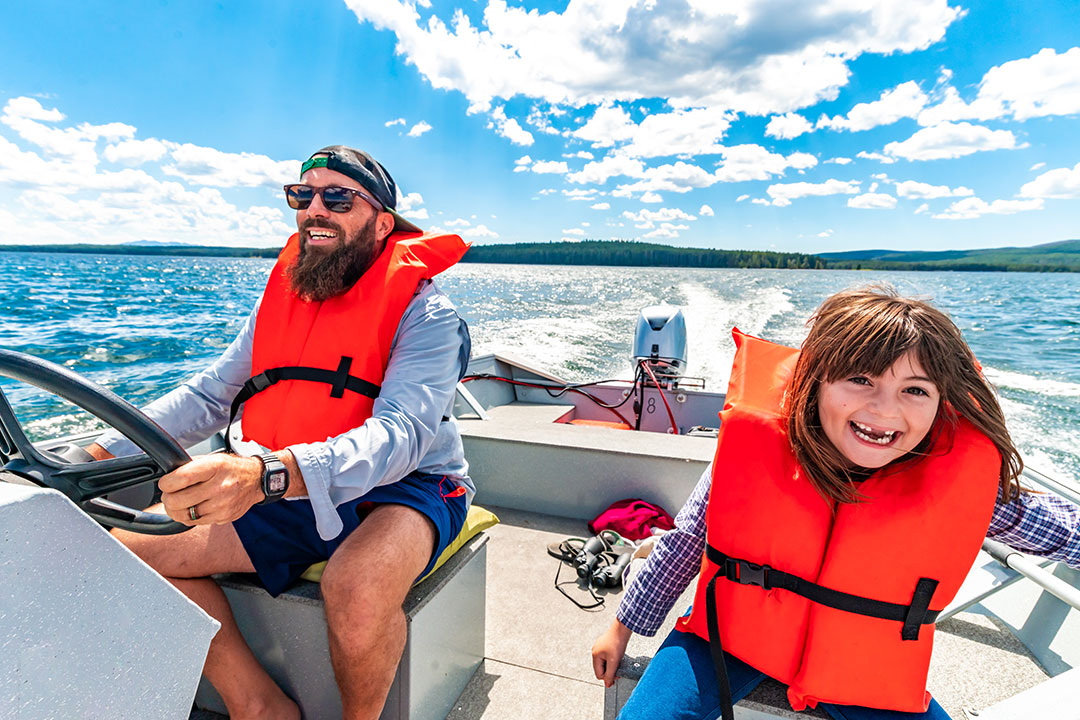With so many lakes and rivers in our region, you are bound to find yourself on the water with friends and family at some point in the summer season. As you board your vessels for summer memories on the water, it is important to make sure everyone is aware of life jacket safety. This requires all boaters to have access to life jackets that must be in proper working order. Age requirements must be followed in order to stay in compliance with the law.
It is imperative for everyone to check the security of their life jackets before going out for a day on the water. Today’s blog will not only discuss the importance of life jackets, but also inform how to spot a defective personal flotation device before you go on the water.
The Legalities of Personal Flotation Devices
Life jackets, also known as personal flotation devices, are required to be aboard water vessels for protection in open water. According to the U.S. Coast Guard’s 2021 recreational boating statistics, 75% of boating deaths are due to drowning, and 85% of those victims were not wearing a personal flotation device.
In Missouri and Illinois, all water vessels, such as boats, jet skis, sailboats and more, are required by law to have enough U.S. Coast Guard approved life jackets for all passengers. Violating these life jacket safety laws may result in serious fines for boaters. Additionally, life jackets must be:
- The appropriate size for each wearer.
- Be suitable for the intended activity.
- Be in a good and serviceable condition.
- Accessible in the event of an emergency or while the vessel is in motion.
- A model approved by the U.S. Coast Guard.
Signs of a Defective Personal Flotation Devices
If you buy a high-quality life jacket, it is meant to last for several years. However, there comes a time when it needs to be replaced for proper life jacket safety. Here are a few signs to watch for in order to ensure your vessel is properly equipped for your next adventure on the water.
- Buoyancy. Test non-inflatable life jackets in the water. Start by putting it on, wading into shallow water and floating on your back to see if it adequately supports your weight to keep your head above water.
- Fabric. On both inflatable and non-inflatable life jackets, check for tears, holes, rips, separation or brittle fabric. If you can pull on the seams and they come apart, it is likely time for a new personal floatation device.
- Straps. Make sure they are not fraying or separated from the jacket itself.
- Buckles or zippers. Affixed fasteners should be working properly and have no difficulty when you are opening or closing them. If they are not working, it is a major sign that the device is inadequate for use on the water.
- Severe mold or mildew. If there is a major infestation of mold and it cannot be cleaned away, it is time to get a new one. If it is used, its buoyancy is affected and it may not save your life in the event of an accident.
- U.S. Coast Guard tag visibility. If the U.S. Coast Guard tag is unreadable, missing or otherwise faulty on the personal flotation device, it is not legal to use in Missouri or Illinois.
- Auto-inflation. If the auto-inflation mechanics on an inflatable device are not working, it is not suitable for use. Check the oral inflation tube and inflation system to ensure it is operable before taking to the water.
Practice Good Life Jacket Safety!
Life jackets are a requirement for safe excursions on our local rivers and lakes. We recommend checking your personal flotation devices regularly to make sure they are in proper working condition. These checks are not only essential for legal water vessel operation, but they may also save a loved one’s life in the event of an accident.
For more legal and safety tips, visit our blog from our attorneys on how to stay safe all year round.
